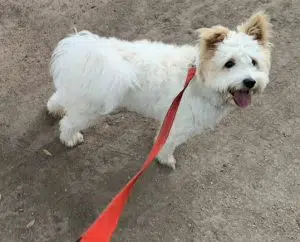
With over 6000 pets bitten by snakes each year in Australia* it is important to recognise the signs of a snake bite and that you know what to do if facing this life-threatening emergency.
Snakes are prevalent in the warmer months particularly around creeks or dams where there is fresh water. However, 73%* of reported snakebites in dogs happen in their owners’ backyards.
Symptoms of a snake bite in dogs and cats
Signs of a snake bite will be seen within 1 to 24 hours.
In many cases, the animal collapses or vomits shortly after being bitten but may then deceptively appear to recover, before gradually worsening again.
Dilated (enlarged) pupils are an early sign of a snake bite, followed by hind leg weakness that can cause staggering. Eventually the weakness progresses to paralysis and the animal cannot walk or even hold its head up.
Breathing becomes rapid and shallow then increasingly difficult, leading to coma and death, especially if not treated.
Other signs that can be seen include trembling, drooling, depression, bleeding from wounds, blood in the urine or vomit, and pale gums.
What to do if you suspect a snake bite
If you do suspect your pet has been bitten by a snake, seek veterinary attention immediately. Not all vet clinics have anti-venom so call ahead to ensure they stock it or for advice on where else to try.
Keep your pet as still as possible to help reduce movement of venom from the bite site.
Remain calm to avoid getting your pet worked up and try to keep the bite site below the level of the heart.
If your pet has been bitten on the neck remove its collar, but don’t waste precious time trying to ice or tourniquet the wound or bleed or suck out the venom. Do not try to catch the snake!!
Tips to reduce the threat of a snake bite
Snakes can be out at any time of day or night and can be found in all seasons so to reduce the risk of snakes gathering on your property:
• Keep your yard tidy by clearing undergrowth, filling holes in the ground, mowing the lawn, and clearing away toys and tools which make great hiding places for snakes.
• Keep walkways clear of brush, flowers and shrubs.
• Clean up any spilled food, fruit or bird seed, which can attract rodents, and therefore snakes.
• Store firewood away from the house.
• Always seek professional help in removal of a snake from your property.
Remember most snakes don’t wish to interact with us, or our pets. If you see a snake, restrain your pet and simply give the snake time to move away, slowly walking back the way you came.
To help avoid snakes whilst out walking with your dog, particularly in areas where snakes might inhabit, stay on open paths. Keep your dog on a leash and away from high grass and rocks where snakes like to rest. Do not let the dog explore holes or dig under rocks or logs.
It is also important that you work on your dog’s obedience training, particularly the recall, so that you can reliably call them away from any danger.
The cost of treating a snake bite in a dog on average can be well over $4000* so pet insurance can help provide you with the peace of mind that your dog or cat is covered for such an emergency.
Sources:
AecVets.com.au
2016/2017 inaugural data of the The SnakeMap Project
NewtownVet.com.au
Dr Melissa Meehan is a highly experienced and respected veterinary surgeon with over 14 years experience. Dr Melissa obtained her Members in Small Animal Medicine through examination in 2008 and now runs her own veterinary ophthalmology service.

The role of moisture in dog food


Walking a dog – how much and why

Tips for exercising a dog indoors

Exercising puppies – how much do they need?


Get your paws on Lara Shannon’s best selling books ‘Eat, Play, Love (your dog) and World of Dogs.
Available in Australia, USA, UK and Canada.